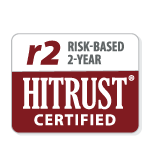Published on .
By Jason Rose, CEO of AdhereHealth
Originally published in Forbes Business Council
When an organization gets a new leader from the outside, there’s often a feeling of hopefulness in the air, a sense that things will be different this time. New leadership at the top is a chance to break people out of old habits, rethink stale business processes and jump-start innovation.
But it doesn’t always work out.
These failures often play out publicly in the sports world. How many times have we seen an assistant coach from a celebrated franchise hired to rekindle the hopes of some hapless team in another city? Sometimes it works. But just as often, fans are treated to tough-talk press conferences, bucketsful of losses and another new coach coming through the revolving door in just a few years.
So why do some turnarounds work while others fizzle? The answer, I think, lies in the ability to value the voices of the people inside the organization while still pushing aggressively ahead with your own vision for the future.
Here are some of the most important lessons from my own experience as a chief executive hired from the outside.
Organize leadership around common goals.
At nearly any organization, impressive talent is waiting in the wings, ready to accomplish extraordinary things under new direction. But if these people are all working in opposite directions, the organization won’t get anywhere. When I became CEO of AdhereHealth in 2018, one of the first things I did was to get the executive leadership team behind a set of common goals that would guide the organization for the next 12 to 18 months.
Here’s how: I asked all of my direct reports to write a list of their top priorities and submit them to me; then, I looked for common themes. It soon became apparent that these leaders, who may have thought of their work as disconnected from one another, were concerned with many of the same outcomes.
Listen to your clients.
I made a point to visit with each of our clients — and not just the big ones — to understand what they valued and learn whether they had recommendations on any changes. Establishing this top-to-top dialogue early on provided tremendous insights for building momentum that made a difference. These “voice of the customer” insights provided clarity on what really mattered. One of the more amazingly consistent themes I heard was their desire to spend more money with our company to increase their ROI. Carrying this message back to the organization established instant growth momentum only weeks into the job.
Innovate and fail fast.
To some people, the words “culture change” mean cracking the whip, destroying work-life balance and just generally making employees afraid they could lose their jobs at any moment. That’s not it. Instead, new leaders should find ways to create supportive, team-oriented cultures that result in increased innovation. Brainstorming sessions should be loose and exciting environments where no idea is too silly or far-fetched. I always like to say, “When you are brainstorming, all ideas are good ideas.” Go outside the office to a relaxed environment and remove titles from the meeting. The most promising ideas should be put into practice quickly with a “fail fast” mentality that enables incremental improvement toward big ideas.
“Projectize” everything.
My background is in technology management and innovation. That means I’ve spent years breaking big projects down into smaller components and guiding teams through a series of projects that eventually add up to transformational change. “Projectizing” these strategic initiatives establishes focused momentum with documented milestone-based tasks and a singular leader assigned with defined start and end dates.
These projects should be evaluated a minimum of monthly, if not bi-weekly, for progress toward milestone goals. By applying these principles in a broad and flexible way across an organization, executives can gain strategic alignment and establish a winning corporate culture. Every company needs to set start and end dates for projects, owners for various tasks and status meetings to hold people accountable. Otherwise, things quickly begin to slip.
Celebrate small wins.
Big projects could take a year or more to finish, which is longer than some stakeholders are going to be able to stay excited. That’s why leaders should identify several major milestones each year that everyone in the company can rally around. By regularly communicating about these smaller goals and celebrating when the company hits them, leaders can keep staffers energized.
Focus on risk, not just reward.
New executives have an understandable desire to train their focus on big-picture projects with lots of upsides. But it’s also vital to shore up any risks facing the organization. I knew that nothing I did would matter much if my company were to suffer a catastrophic failure on risk. So, even though it might not seem as exciting as innovative growth initiatives, I spent a good deal of time early on establishing data-driven programs to assess regulatory, cybersecurity and other organizational risks.
Scaling starts with processes.
In my first hours on the job, we had an all-employee meeting where I set the vision for being a high-growth, innovative technology company. Setting the tone early on the need to build processes, supported by technology with the least amount of people, was important to set the ground rules right from the start. The old adage is “people, process, technology,” but I think that is backward. Establish the processes first, layer in technology to build effectiveness and efficiencies, and then add the least number of people to execute. Building this scale requires prioritizing investments and leadership at all levels and doesn’t happen overnight. Those colleagues who embraced this transformative mindset were rewarded while others typically self-selected out.
Leadership starts with being authentic and believing in yourself. The journey for the past three years has truly been exciting, frustrating and rewarding. I despise mediocrity, so I’m embracing disruption in a never-ending pursuit to be the best version of myself.
This article originally appeared here.
